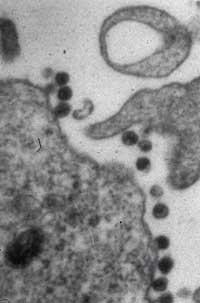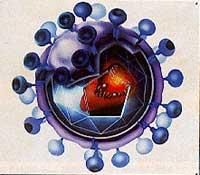Seeking adequate gene therapy
Diseases of genetic origin can be cured by the introduction of genes in cell nuclei. The only problem would be to identify the defective gene and synthesize it without defects. The genetic research developed in recent times has led to more and more genes being associated with diseases. The proper gene repair can prevent diabetes, blindness, and possibly hair loss. In theory it is so.

But, how could the healthy gene be introduced into each and every cell of a body? Normally it is not necessary to enter each and every one of them, but the repair must be properly processed. The liver, kidney, or area may need change. However, there are many cells.
We know the only way to mix foreign genes with the DNA of a human being, which was called gene therapy. The idea is simple. Despite being counterproductive, in nature this is the work of viruses. But in the laboratory you can apply to a virus the gene you want to introduce and remove your DNA. Thus, when the virus is contaminated, it will insert the appropriate gene into the cells. Idea simple but difficult to put into practice. In the current state of genetic research, very satisfactory results are not obtained. In addition, not all tissues of the body support gene therapy.
There are different types of viruses. Purdue University scientists have used alphabetics and retrovirus to form a new virus that will be a carrier in gene therapy. The alphabets are transmitted by insects and sick
produce neurological tunes and arthritis. Retroviruses are characterized by the substitution of DNA by RNA, with the ability to mix it with cell DNA. In addition to the internal functioning of the cell, both have another important difference, that is, they act on different types of cells. The AIDS virus, for example, is a retrovirus that contaminates macrophages (some bacteria) and T lymphocytes (immune system cells).
Scientists have joined the outer layer of retroviruses to the alphabetic protein system to form a new type of retrovirus. This new virus infects the cells that the alphabetics contaminate, but once inside it acts as retrovirus.

The first tests of gene therapy with a virus already created are being conducted. The two original viral systems in this case were toxic, but the combination obtained leaves no trace of toxicity. In addition, the new virus does not kill the cell until it increases much, that is, many specimens of virus are obtained. Research is still being tested with cells grown in the laboratory.
It can be a big step in gene therapy trials of the first few years. From that path, probably, we can have a hope of greater progress.
Buletina
Bidali zure helbide elektronikoa eta jaso asteroko buletina zure sarrera-ontzian











